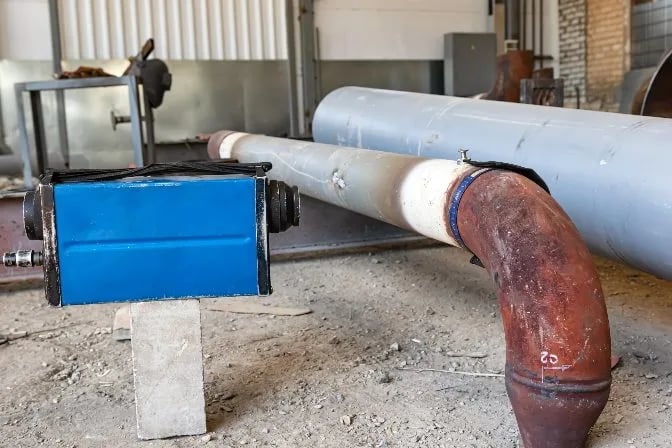Secure Your Investment: Thorough Pipeline Welding Inspection for Comfort
Vital Pipeline Welding Examination Tips for Quality Control
Just how can one guarantee the top quality of these welds that link the pipe areas? By comprehending the necessary pipe welding inspection suggestions, experts can prevent prospective hazards, minimize costly repairs, and support the reliability of these essential facilities.

Importance of Welding Inspection
Welding inspection plays an important duty in making certain the architectural integrity and safety of pipe systems. By diligently taking a look at welds, examiners can determine any flaws or blemishes that could jeopardize the integrity of the pipe. These inspections are important for avoiding leaks, tears, and other possibly tragic failures that might cause environmental damages, monetary losses, and even death.
The importance of welding examination can not be overstated, as the high quality of welds directly impacts the general performance and long life of the pipe. Through non-destructive screening methods such as visual examination, ultrasonic screening, radiography, and magnetic fragment testing, assessors can spot problems that might not be visible to the naked eye. By determining and dealing with these problems early on, welding evaluation assists to ensure that pipelines fulfill market standards and regulative requirements.
Eventually, welding assessment is a crucial facet of quality control in pipe building and construction, upkeep, and repair service (Pipeline Welding Inspection). By supporting rigorous assessment requirements, industry experts can reduce threats and promote the safety and dependability of pipe systems
Typical Welding Problems
Among the obstacles faced in pipe welding, common problems can dramatically impact the architectural integrity and efficiency of the bonded joints. Fractures in the weld can propagate over time, jeopardizing the structural integrity of the pipeline. Discovering and attending to these common issues through complete assessment and high quality control processes are crucial for ensuring the dependability and security of pipeline welds.
Examination Methods for Pipelines

In making sure the architectural integrity and reliability of pipe welds, the application of strenuous assessment strategies is extremely important. Numerous assessment techniques are used to detect potential problems and ensure the general high quality of the welds. Non-destructive testing (NDT) methods such as radiographic screening, ultrasonic screening, magnetic particle screening, and fluid penetrant screening are typically utilized in pipe welding inspection. Radiographic testing entails using X-rays or gamma rays to spot internal problems, while ultrasonic testing uses high-frequency audio waves to recognize blemishes. Magnetic particle testing works for discovering surface-breaking flaws, and fluid penetrant screening is made use of to discover surface splits. Visual examination is also essential in pipeline welding to recognize any kind of visible problems or discontinuities. In addition, automatic evaluation techniques making use of advanced innovations like drones and robotics are progressively being employed to boost the efficiency and accuracy of pipe evaluations. By using a combination of these examination techniques, pipeline bonded top quality can be guaranteed, and possible problems can be minimized prior to they rise right my explanation into larger issues.
Making Certain High Quality Assurance Specifications
To support strict top quality guarantee standards in pipeline construction, careful adherence to developed sector methods and standards is necessary. Quality guarantee in welding processes requires a thorough technique encompassing various stages of pipe construction. Carrying out a durable top quality monitoring system that consists of normal audits and evaluations can better boost the general quality guarantee standards in pipeline welding.
Avoiding Pricey Repairs
Offered the vital value of keeping rigid quality control requirements in pipe building, an aggressive strategy to avoid pricey fixings is this hyperlink crucial. By executing thorough assessment protocols throughout the welding procedure, potential concerns can be recognized and fixed early on, inevitably saving both time and money. One key facet of protecting against costly repair work is guaranteeing that welders are properly educated and certified, as this significantly minimizes the chance of defective welds that might cause future failures. Additionally, making use of advanced assessment strategies such as non-destructive screening can aid spot any type of issues or variances in the welds prior to they intensify into significant troubles. Normal maintenance checks and surveillance of environmental factors that can affect the honesty of the pipeline are likewise crucial in avoiding expensive repairs. By spending in preventative measures and prioritizing quality control at every stage of the pipeline welding process, firms can decrease the risk of costly fixings and ensure the lasting dependability of their facilities.
Conclusion
Finally, adherence to appropriate welding assessment strategies is important for making certain the high quality and stability of pipes. By determining common welding defects and executing thorough evaluation processes, pricey repairs can be avoided, and top quality assurance standards can be fulfilled - Pipeline Welding Inspection. It is essential for pipeline welders to prioritize examination procedures to maintain the safety and security and integrity of the facilities they are servicing
The relevance of welding examination can not be overemphasized, as the top quality of welds straight influences the total performance and durability of the pipe. Non-destructive testing (NDT) methods such see post as radiographic screening, ultrasonic testing, magnetic fragment testing, and liquid penetrant screening are typically made use of in pipe welding inspection. Visual assessment is additionally important in pipe welding to identify any kind of noticeable problems or suspensions. Furthermore, computerized examination strategies making use of advanced modern technologies like drones and robotics are progressively being employed to enhance the performance and precision of pipeline assessments.In conclusion, adherence to correct welding examination techniques is vital for making certain the high quality and integrity of pipelines.